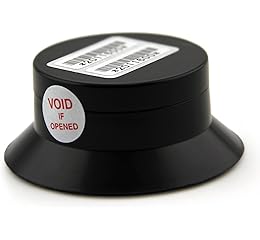Let’s talk about radon shall we?
Vero works at Health Canada and last year she was working on some information regarding radon in

your house.
The Government of Canada defines radon as:
Radon is a radioactive gas that comes from the breakdown of uranium in soil and rock. It is invisible, odourless and tasteless. When radon is released from the ground into the outdoor air, it is diluted and is not a concern. However, in enclosed spaces, like homes, it can accumulate to high levels and become a risk to the health of you and your family
Wait, why would you read something when you can see an awesome video?
With that knowledge, we decided to buy a radon tester off of Amazon and put it in the basement. It came out to around $45 which I suppose is a small price to pay to find out that I’m sucking in some odourless gas and I should do something about it. We put the radon tester in a spot out of the way in the basement and left it there for six months to see what happens.
Six months later we received a report and it said that we had higher than suggested levels of radon. Not by a lot, but still, it may be a concern.
The maximum recommended level of radon is 200 becquerels per cubic meter. We had 207.

So, we’re not OVERLY worried considering the infographic shows we should fix our home within 2 years, but still, it’s something to look into. The first thing we have tried to fix is our sump pit cover. It wasn’t sealed up so there could have been radon gas leaking out through that. Dad sealed it all up with tape and we will buy another test to see if it made a difference. If it didn’t then we are dealing with another issue that could be cracks in the walls or floor.
Why am I bringing this up with you? Well, I figured that if I have radon in my basement, then you may as well. What’s the harm in spending $45 to get yourself a test? I suppose it’s not the end of the world if you don’t spend any time in your basement but if you do, do yourself a favour and get a test done.